ALREADY A PAID SUBSCRIBER? SIGN IN
The Tenby daffodils are flaring on the banks that fall steeply into the ditch. Backlit by morning sun they are the purest of yellows, brilliant and bright and so very full of life. The tilted buds are already visible breaking their sheaths as the snowdrops dim and the primroses take over and begin their moment. The narcissus join them then, not to overshadow as you might think, but in a partnership of yellows, the colour of spring and new life.
Now considered a subspecies of our native daffodil, N. pseudonarcissus subsp. obvallaris is found locally near Tenby in Dyfed, South Wales, where they have a small range of natural distribution. Their cousin, N. pseudonarcissus, is variable, with a soft yellow trumpet and palest yellow petals, so a group registers quite differently and they have a softness that sits easily. Not so the Tenby daffodil which is brazen and to the point, being bright chrome yellow throughout. Though this might not be easy in a larger daffodil, the Tenby is no more than a foot tall and everything is perfectly proportioned and neat. Thus they weather the March storms and stand like a person with innate confidence that is happy in their own skin.
The crease in the land that we call the Ditch is far more than that. It is the divide between the ground that we garden and the rounded rise of the Tump that we look out upon and forms our backdrop to the east. The spring-fed rivulet that runs quickly down it is constant and gurgling, even in summer. The silvery slip of water was revealed when we cleared the brambles 10 years ago and fenced it on both sides so that this distinct habitat could become an environment of its own. We have been building upon the nature of this place ever since. Splitting the primroses that sit happy in the heavy, wet ground and stepping plants through it that are either closely related to the wild plants that thrive there or feel right and can cope with the competition.
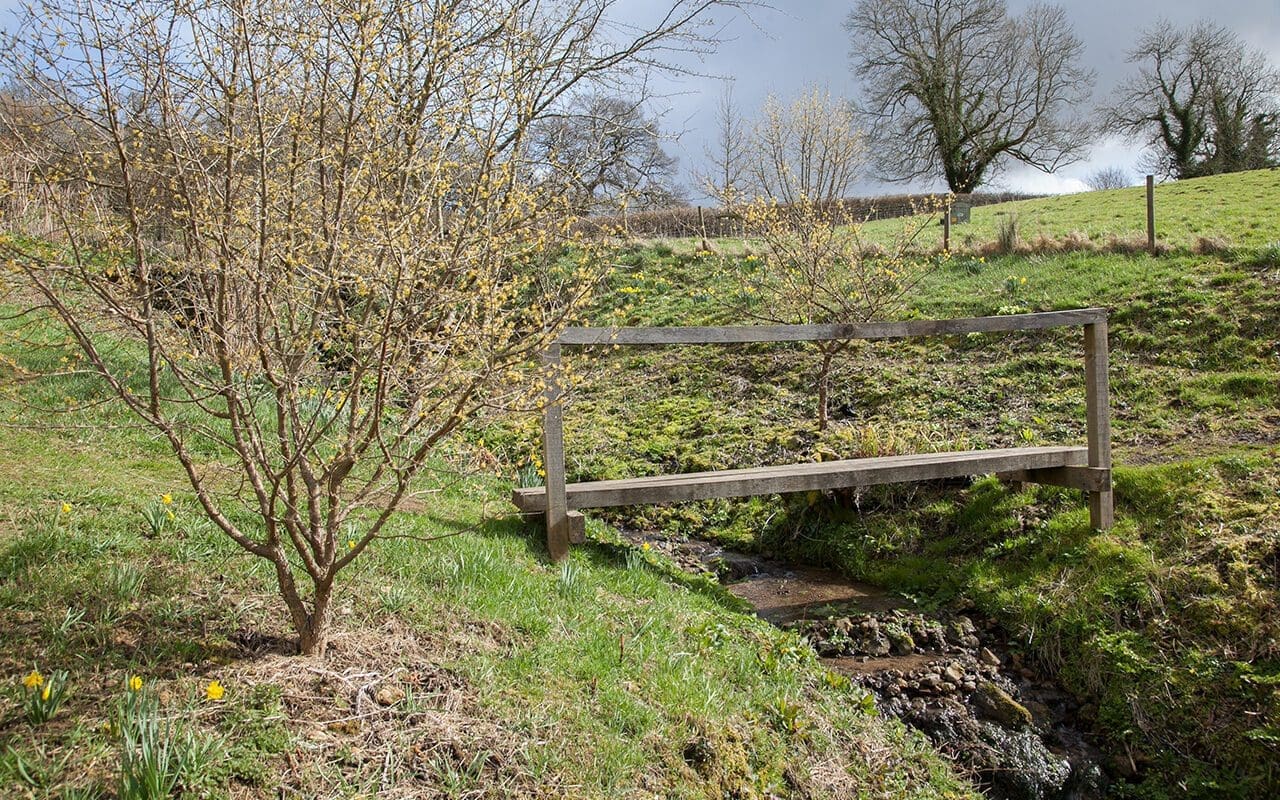
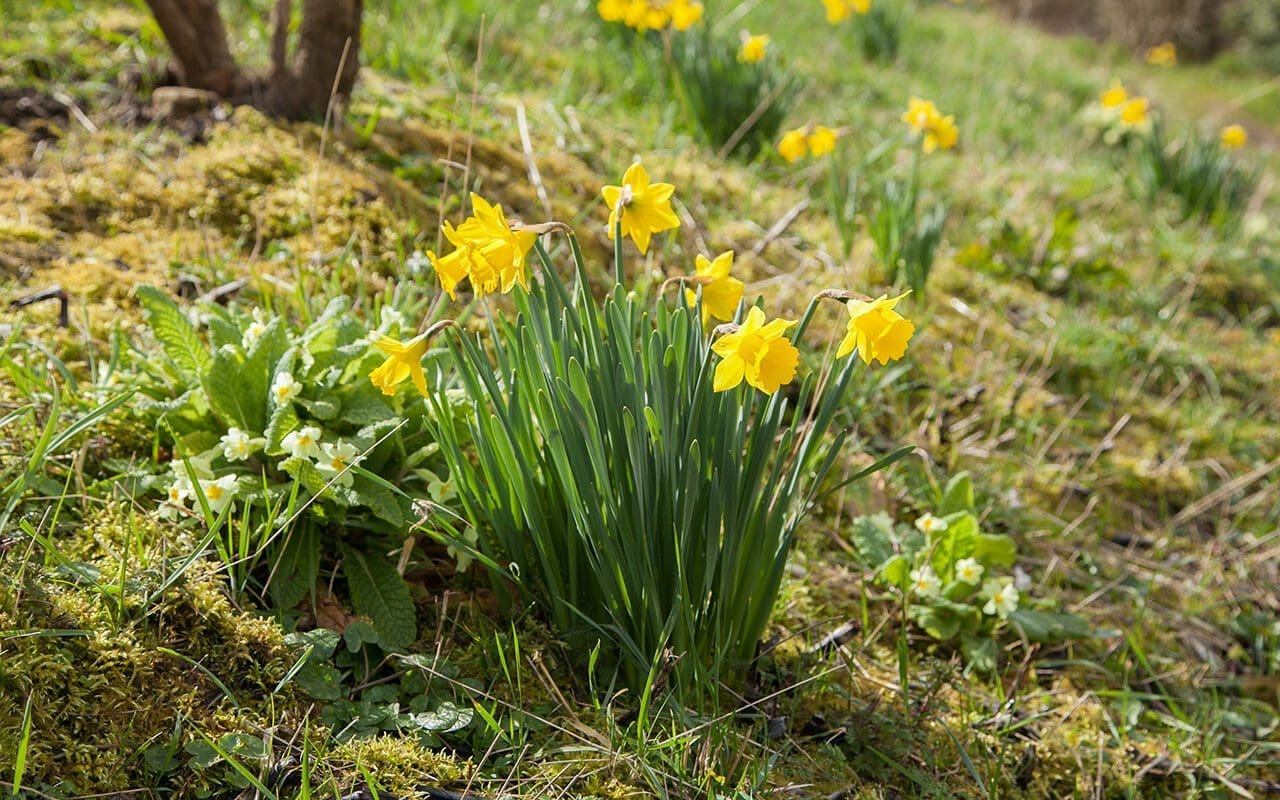
The Ditch is a place that we garden lightly and the plan is to one day have it naturalised with bulbs that like the conditions here. Snowdrops and aconites to start the year and snakeshead fritillaries and camassia to follow. The Narcissus obvallaris are grouped loosely around a staggering of Cornus mas, which start to bloom when you can feel the winter easing.
So far the Tenbys have not started to seed, but I hope that our man-made imprint can be softened with seedlings that find where they want to be. This has begun already with the straight Narcissus pseudonarcissus, which I’ve been planting lower down the slopes and, in an echo of the ones we found higher up the valley, growing on little tumps that run alongside the stream where the hazel grows. They sit there with the young Dog’s Mercury as a marker of this ancient woodland and looking down on all they survey. The way they grow in the wild is a good measure for where they want to be when you find them their home. Cool, but not in the wet hollows and with a little shadow later to ease up the competition of the more thuggish grasses.
Having been stung a couple of times with narcissus orders that were incorrectly supplied, I started three years ago by potting up a hundred bulbs, two to a pot, as I needed to know that we were putting the real thing into this wild place. It was the year that Huw’s mother passed away and, as his family are from Swansea, it felt fitting to be planting them out just a fortnight after she died. The Tenbys start to bloom around St. David’s Day and, when the first yellow shows, we add another round of plants potted up the previous autumn. Midori and Shintaro from Tokachi Millennium Forest took part one year when they were here to stay on a ‘gardening holiday’ from snowbound Hokkaido, and it has now become something of a tradition to plant a number round about now to find the places in the ditch where we feel the light needs capturing.
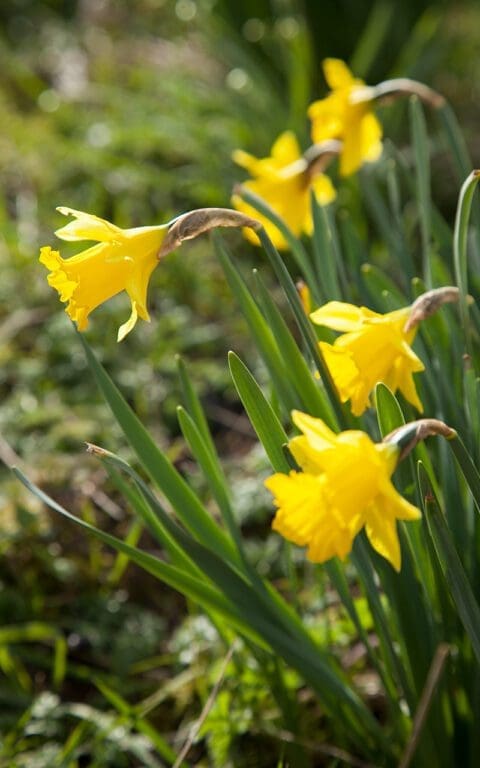
Words: Dan Pearson | Photographs: Huw Morgan
Published 13 March 2021
Finally, it seems, it is officially spring and we hope to move on from dodging the storms at last. Sailing through unscathed since they first showed colour in early January, the Cardamine quinquefolia is a plant that I would like much more of. It has taken a while to establish, but now it has the shade cover it likes, it is moving amongst the hellebores and the lavender-blue Iris lazica. An early woodland ephemeral, this cardamine has come and gone by the time the trees leaf up in May. It is a plant that takes all your attention for being so willing when most other things are dormant and it is good company for going into dormancy when they come to life. For this reason, it is worth making a note of where you need more of it and then moving it as soon as it breaks ground in January if you are not to miss the moment. It has fine surface roots like wood anemone, so I find it best to lift a square sod once the clumps are large enough to divide with a border spade.
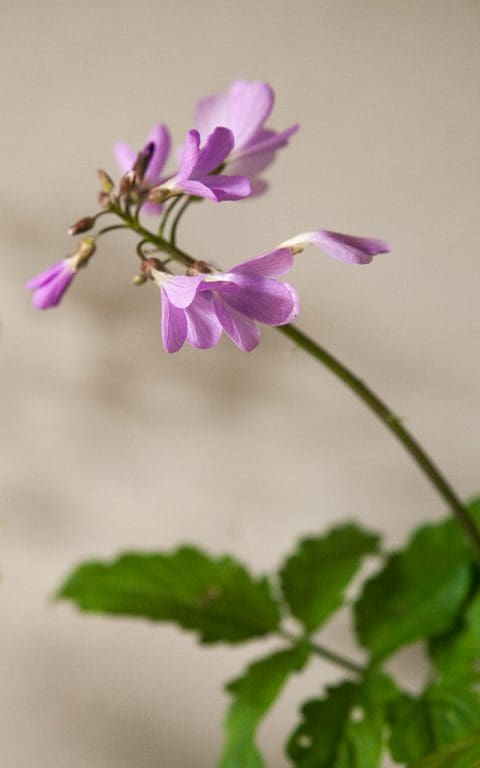
This is the first year I have cut back the Epimedium sulphureum, shearing the foliage as soon as I saw flower buds in the crowns in mid-January. ‘Best practice’ dictates this is the most effective way to appreciate the coppery, new growth and emerging flowers, but leaving this easy epimedium for the past few winters has created a wonderful micro-climate whilst I’ve been establishing the hellebores. I have them pooled in its pillowy foliage so that their leaves are protected from the easterlies, but the flowers can rise above them.
Shearing last year’s growth in January felt bold, but the delicate flowers are now dancing in the breeze and quite capable of dealing with a storm. They are as delicate as fairies, despite being tough enough to deal with those difficult places between shrubs and beneath trees. It holds the slope behind the tool shed where there is shadow, but it is just as happy in open ground as long as it retains moisture. This would not be the case at all for its Asian relatives, but this reliable European epimedium is made for easy gardening.
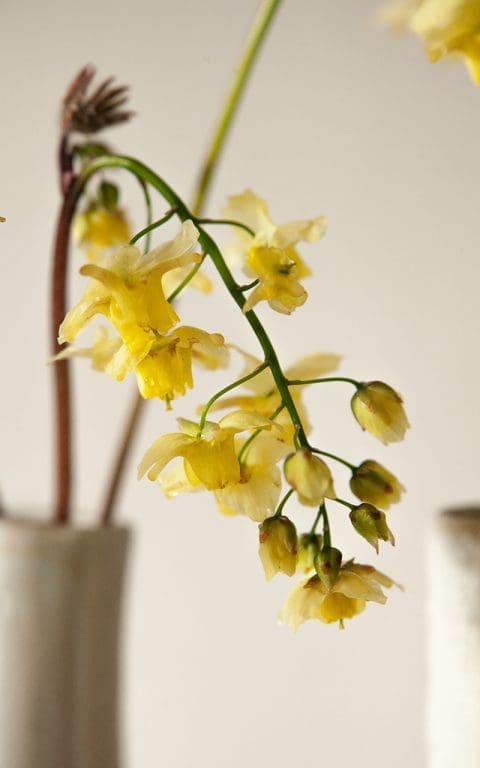
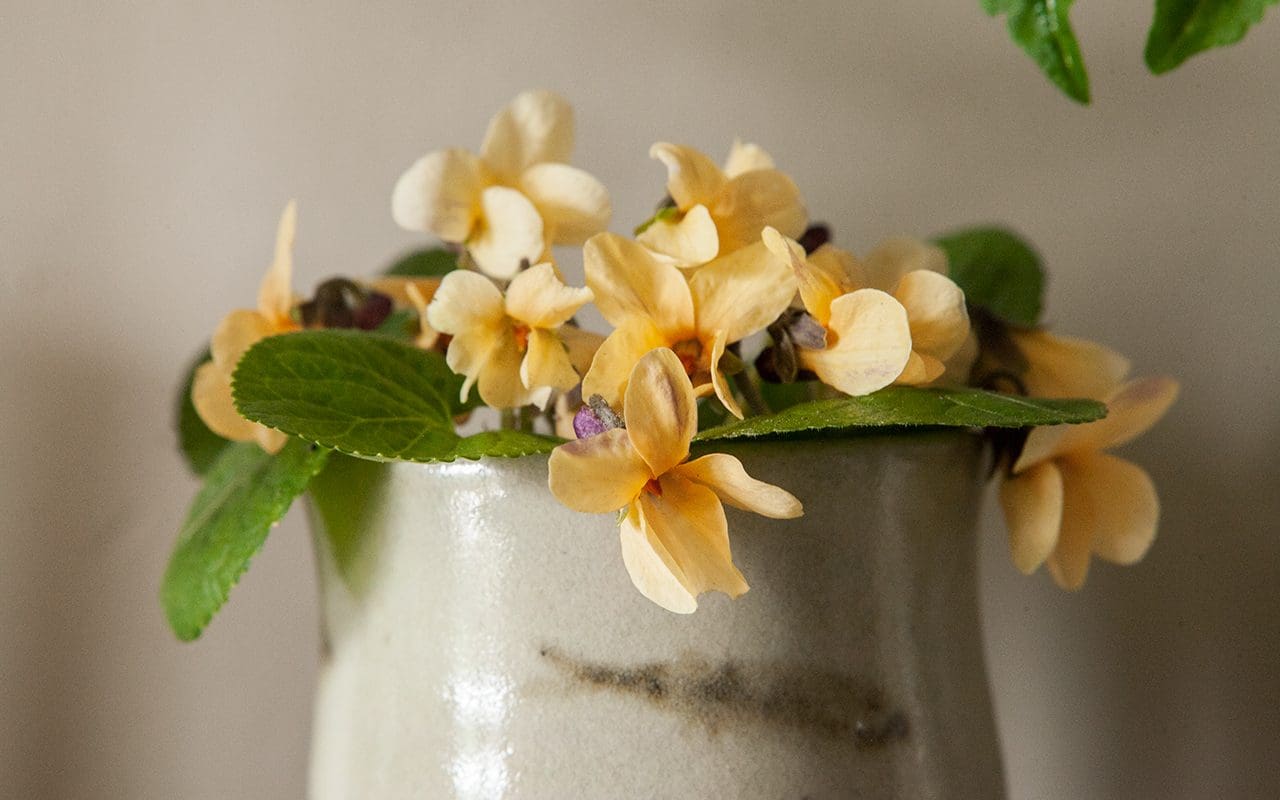
Out of necessity I have been experimenting with planting woodlanders in sunshine on our exposed hillside. As long as they have the canopy of later-to-emerge perennials, the primroses actively seem to prefer spring sun. The same can be said of spring violets, which I am planting wherever there seems to be a suitable niche close to the paths. I first saw the unusual, soft apricot Viola odorata ‘Sulphurea’ a few years ago in the nuttery at Sissinghust, when I was visiting Troy Scott-Smith. He promised me a division but, as is the way, spring happened and the business surrounding it meant that it was autumn before Troy re-visited the spot to follow through on the offer. By then the violets seemed to have moved on so, smitten, I ordered seed from Chiltern Seeds and sowed it ahead of winter. Being another mild year and without the chill they need to germinate, they took two years to appear and then another one to flower, but now here they are. The wait seems suddenly nothing and I’m delighted to have them for myself. Though not as strongly perfumed as their purple cousins, I’ve also used them along path edges, combined with this creamy epimedium, so that not an inch of ground goes without cover.
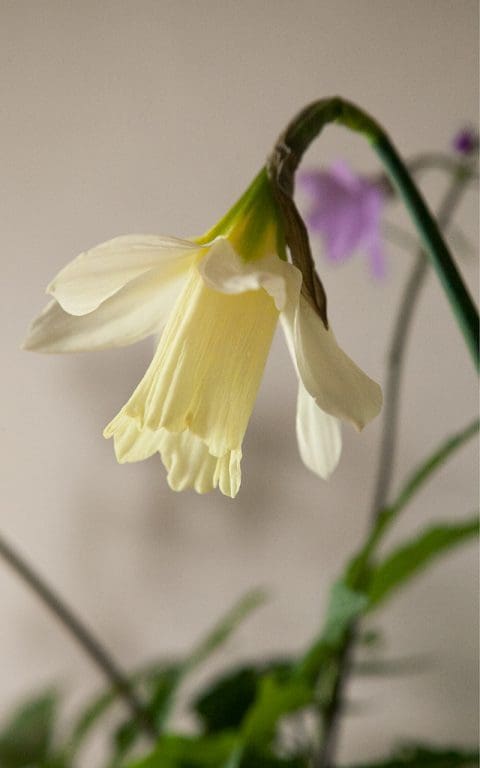
I never fail to be delighted by Narcissus moschatus, which is possibly my favourite of all for its poise and delicacy. Closely related to our native N. pseudonarcissus, but only occurring naturally in the Pyrenees, it has taken a while to build up a nice colony, for the bulbs are hard to find. I have it growing under a five year old sweet chestnut that was planted in memory of my Dad. Opening a pale yet sharp buttercream yellow, they soon fade to ivory white. Heads tilted downward (they are also known as the swan-necked narcissus) the flowers have an air of modesty and melancholy.
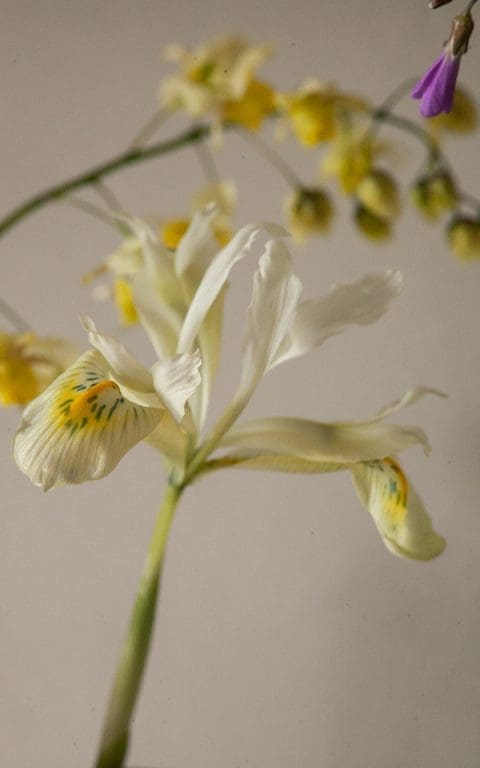
Though some plants are good to revisit every year (and in the case of the narcissus, I am never disappointed) it is the first time that we have grown Iris ‘Katharine’s Gold’. It is always nice to discover a potential new favourite, and is one of the reasons we trial some new varieties of bulbs every year. This is the last of this year’s reticulate iris to appear, a good three to four weeks later than the first ones that came in late January. Reputedly a sport of I. ‘Katharine Hodgkin’, we prefer it as it is taller and stands more elegantly with more air between the standards and falls. Pale yellow suits this moment too. One we hope can now be depended upon to get brighter.
Words: Dan Pearson | Flowers & Photographs: Huw Morgan
Published 7 March 2020
We are sorry but the page you are looking for does not exist. You could return to the homepage